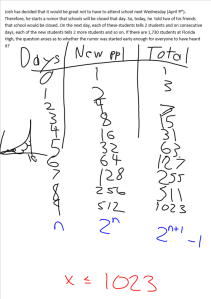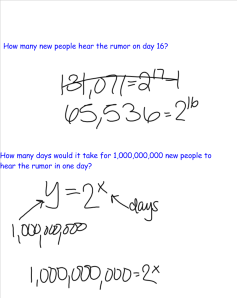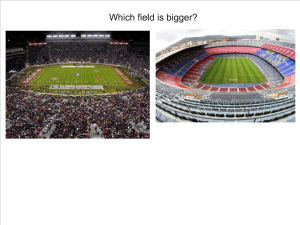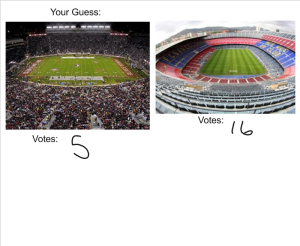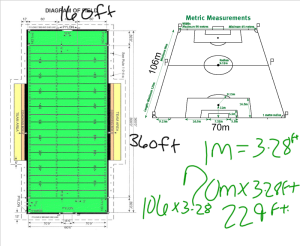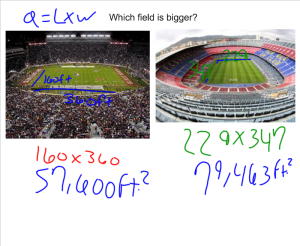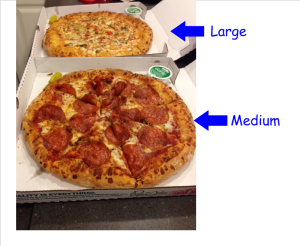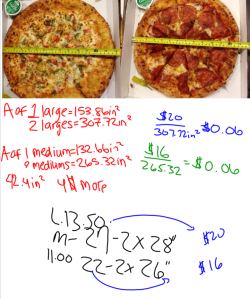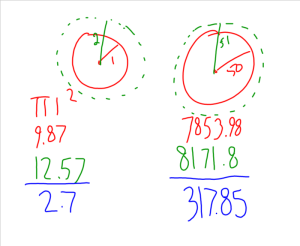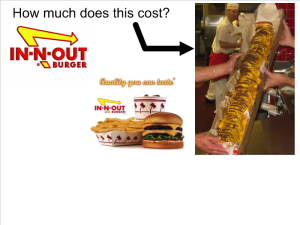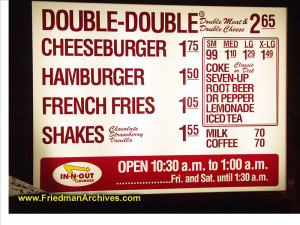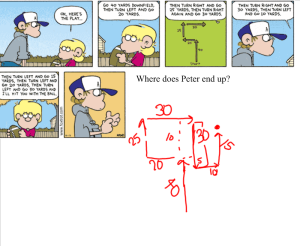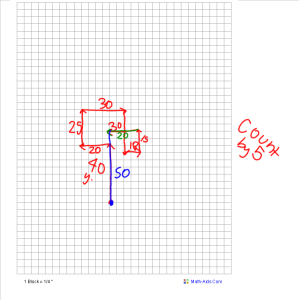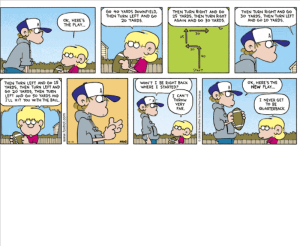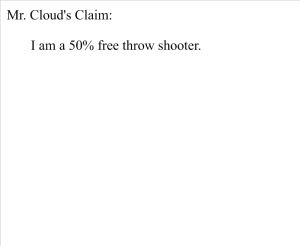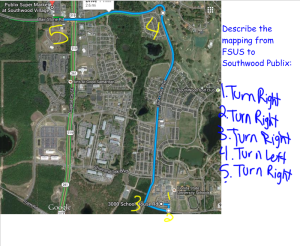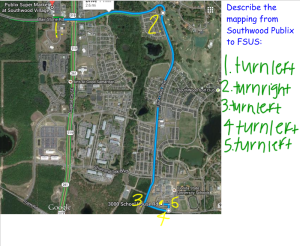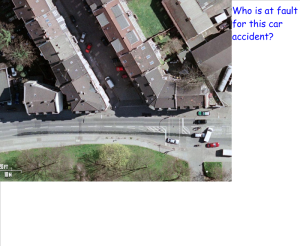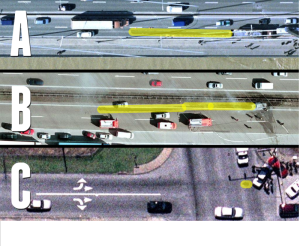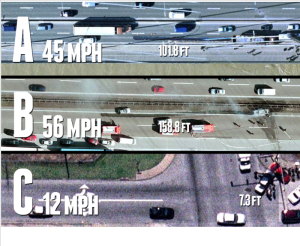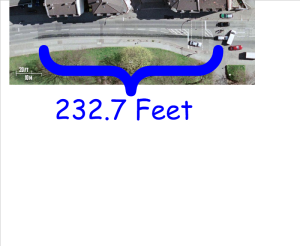Two short problems from class today:
First, in Algebra II, we started discussing logarithms. Rather than just jumping straight into the definition, I gave my students an example (with a lot of pitfalls) that made a logarithm a necessary tool to use. Here is the situation:
Josh has decided that it would be great not to have to attend school next Wednesday (April 9th). Therefore, he starts a rumor that schools will be closed that day. So, today, he told two of his friends that school would be closed. On the next day, each of these students tells 2 students and on consecutive days, each of the new students tells 2 more students and so on. If there are 1,730 students at Florida High, was started early enough for everyone to have heard it?
A lot of interesting conversation ensued. After a few minutes working with the problem, my students ended up at the following consensus:
They decided that, at most (which took them a while to realize that some students may tell the same friends), 1023 students would hear the rumor, which is not enough. One student pointed out that if Josh had started the rumor one day sooner, everyone would have found at (at least by the numbers). There was great conversation about the pattern for the number of new people that heard the rumor and the pattern for the total number of people that heard the rumor were exponential. Some formulas were derived. Then this happened:
The first question turned into a simple plug and chug in the formula issue. The second question led to some good discussion. My students decided that they needed something new…something they didn’t have…something that would allow them to find a missing exponent…a logarithm!!
Secondly, in geometry, we derived the formula for the area of a regular polygon. The interesting conversation came from an application problem.
I gave them some interesting information about The Pentagon. I gave them the area of the building and the apothem (without telling them that’s what they had) and asked them for the perimeter.
I know, it’s a really straight forward textbook style of question. I was excited, however, to see how interested some of my typically unengaged students were with this question. The really exciting part was when I asked them how long it would take Bethany to walk the perimeter of the E-ring. There wasn’t guessing, there wasn’t assuming…they went straight to: get her up in the front of the room and let’s do some measuring. They decided to use proportions and they decided that they needed to convert their answer to minutes. It’s really wonderful to see how they’re taking ownership in the problems and are driving the conversations. I did very little probing. I was truly facilitating and only offering suggestions. I can’t wait until this model can be fully implemented!
**Notes: I didn’t think up either situation. I found the rumor problem in a textbook and the pentagon idea in another blog. I just took them and made them fit my classroom.**
